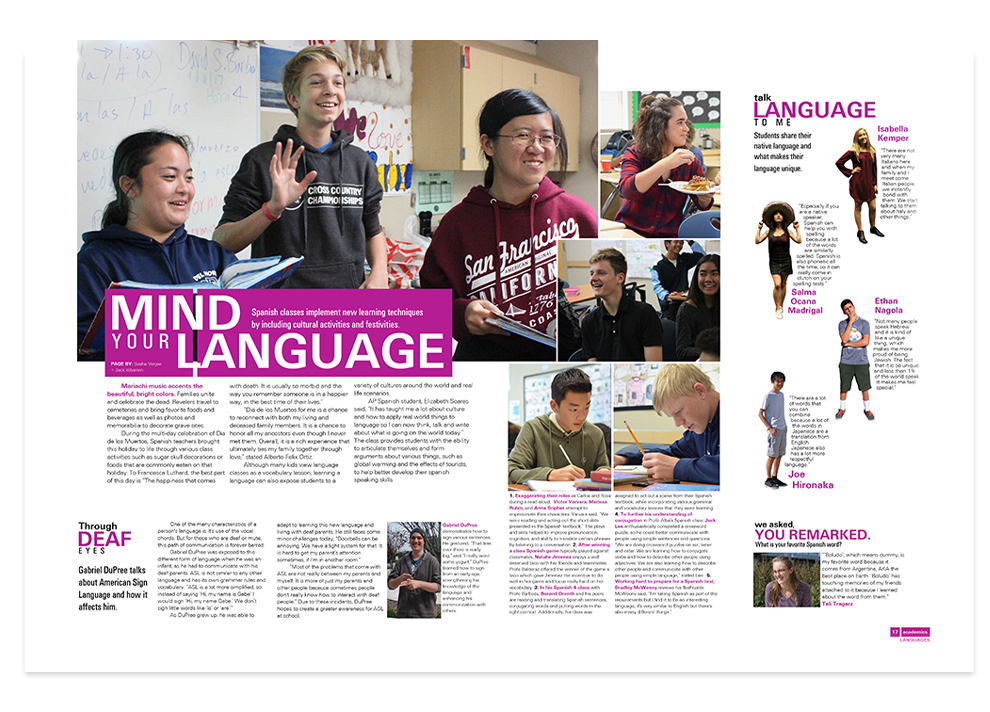MAKE IT MEAN MORE
When you discover your “why,” you’ll find clear goals and better focus
We make yearbooks. It is what we do. But, why? When a staff is inspired by its mission, when the students understand their “why,” they’re motivated to do more than simply document the school year.
It’s not enough to create and sell books. We need to understand why. One of the first activities I have our staff complete is the “Golden Circle.”
We watch Simon Sinek’s TedTalk based on his book, Start with Why, break into small groups, and discuss our what, how — and why. Once the staff has defined the “what” and the “how,” we determine our “why.”
After working through the process this year, we concluded that the yearbook provides a platform for every student’s voice to be heard as well as preserves the history of the year. These ideas drive our coverage choices. Our “why” helps determine our ladder and becomes the catalyst that drives us to excellence.
When a yearbook staff understands its purpose, the staff will have greater ownership of the book’s content and make sure it values all students. To do this, we must uncover both the individual stories as well as events that shape the year. We need to hear the voices of all students, not just the athletes and social stars, but the almost-silent whispers of everyday students.
We do this by listening — in the hallways, in the classrooms, in the library. By asking students and staff to share their stories and reporting them in a fair, honest and accurate manner.
We do all of this because it’s our “why.”
Robin Christopher
Del Norte HS • San Diego, CA

BEHIND THE BOARD. American Literature teacher Rachel Ross was in the yearbook room talking to the staff when she mentioned a student who made cool handplanes.
She shared some background about Taro’s boards and that he sold them, and the staff took it from there.

THROUGH DEAF EYES. Yearbook staffer Jack Iribarren was working on homework with a classmate when he learned Gabe’s parents were deaf and that he communicated with them using ASL. Jack asked if Gabe would be comfortable sharing his story in the yearbook, then interviewed him and wrote the story.

NOW I AM ME. The administration invited students to a staff meeting to tell their stories and share their struggles. When the staff talked about later, it turned out that EIC Ana Mladenovic worked with Conner at Ralph’s Grocery Store. They talked and the story appeared in the yearbook.
Ask your audience
Survey the school.
Reach out to students at the beginning of the year. Questions should relate to your theme. And, always ask if they have photos. Survey your faculty/staff, just like you survey students. Ask coaches to point out athletes who contribute in ways that may not be transparent to spectators.
Be present on social media.
Students are tech savvy. Watch what they post and look for story ideas.
Get your staffers out.
Leave the yearbook lab. We use the Herff Jones interview webs. Not only does it teach your staff to get out there and talk to new people, but it also uncovers story ideas.
Never miss an opportunity to talk.
During club photo day, interview every club president. Really.
Conduct group interviews.
Invite a half-dozen team or organization members in and conduct a group chat. Keep a video camera rolling to capture the conversation.
Spread the word.
Have the editors present the book’s theme at a faculty/staff meeting. End the presentation by asking teachers and staff to help uncover stories.
Get teachers involved.
Email them throughout the year. Ask them what is going on in their classes. Also, ask them for additional story ideas. Personally talk to them, especially English teachers. They collect narratives and senior essays. These essays are full of great leads.
